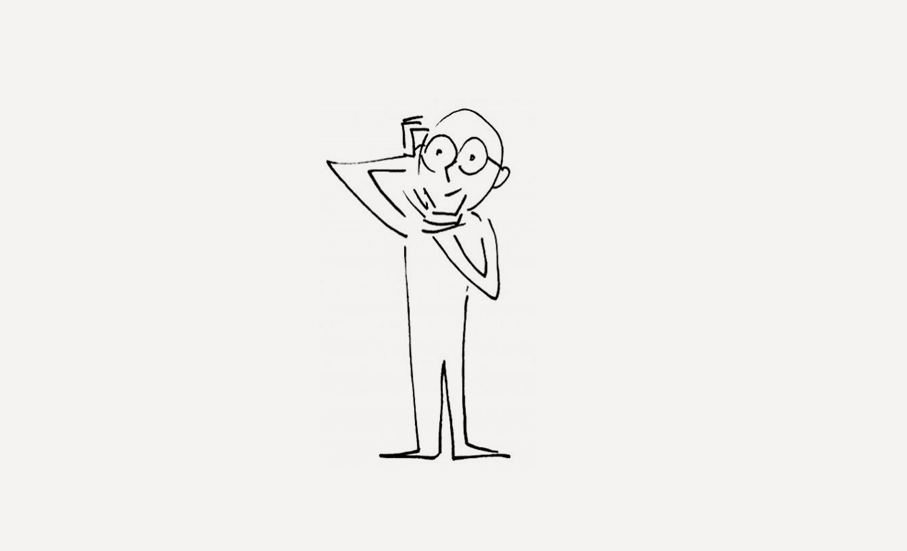
You would think that, with a couple of exceptions, the human body holds no great secrets anymore. That said, an argument has been raging for years over fasciae, the connective tissue that envelopes all of our internal organs. The very existence of fascia is obvious, but its significance in the treatment of diseases and disorders is quite another thing.
Coming up with a precise definition of fascia is proving quite problematic for scientists. In popular science texts, they give the example of a fresh chicken breast bought in a shop, with the white membrane that surrounds the meat. That membrane is a fascia.
An American association, The Fascia Research Society, established an official definition which states that a fascia is a sheath, coating, or any other distinctive cluster of connective tissue that forms under the skin to connect, surround and separate muscles and other internal organs. The Society notes that the fascia system surrounds “all organs, muscles, bones, and nerve fibres, giving the body a functional structure.” Experts on the subject believe that, among other things, the following can be considered structural elements of fascia: joint capsules, ligaments, the retina, as well as the pericardium, peritoneum and the pleura (the fasciae that encase the heart, abdomen and lungs respectively).
“This is a continuous structure, unlike a muscle that starts and ends somewhere. Fascia is a connector that brings many elements together, and has the potential to affect the body in a universal way,” says Michał Kuszewski, a specialist in physiotherapy. Professor Andry Vleeming, a specialist in rehabilitation, calls fascia the “soft skeleton”.
Indispensable tissue
But why do we need fasciae at all? As the German biologist Robert Schleip explains in the introduction to the book Fascial Manipulation, Practical Part: “[…] Muscles hardly ever transmit their full force directly via tendons into the skeleton, as is usually suggested by our textbook drawings […]. They rather distribute a large portion of their contractile or tensional forces onto fascial sheets. These sheets transmit these forces to synergistic as well as antagonistic muscles. Thereby they stiffen not only the respective joint, but may even affect regions in several joints further away.”
“A fascia itself cannot generate forces like muscles, but in spite of this we need it, for example in the high jump or long jump. Thanks to fasciae, the force of several muscles can be concentrated in one place. The Achilles tendon, among others, is a fascia, which enables the catapult effect,” explains Albert Filip Żołądek, a physiotherapist and physical trainer.
As Mariusz Kurkowski and Robert Schleip indicate in the article “Fascia, somatosis, proprioception and perfection of movement precision” in the magazine Praktyczna Fizjoterapia i Rehabilitacja [Practical Physiotherapy and Rehabilitation], fascia is also the largest sensory organ. “The information that can be passed by the receptors located in the connective tissue, includes nociception (the physiological process of picking up, feeling and reacting to pain), interoception (the sense of the internal state of the body from information sent directly by it) and proprioception (the awareness of the orientation and position of parts of your own body),” they explain.
Fascia itself is not a new discovery, but only relatively recently has its functioning begun to be investigated. Schleip, co-organizer of the first International Fascia Research Congress in Boston in 2007, has helped to popularize such research. It was right after this congress that the number of articles about fasciae began to grow. In Schleip’s opinion, interest in the subject is growing mainly because of the development of new research techniques. “After several decades of severe neglect, this ubiquitous tissue has transformed from the ‘Cinderella of orthopaedic science’ into an almost super star position within medical research,” writes Schleip in Fascial Manipulation, Practical Part.
Watch out, it’s not a heart attack
Fascia, like the muscles and bones, is also susceptible to disease and injury. Its structure can be affected not just by accidents, but also by poor posture, lack of movement, poor diet, and even stress and hormone levels. A typical problem for fascia is scarring, which can occur for example after an operation, injury or burn. It is very likely that this tissue will rebuild in the wrong way, negatively affecting its elasticity.
“Let’s assume we’re dealing with a scar from an appendix removal. This can cause disruption in the functioning of the right hip, or the entire lumbar-pelvic-iliac complex, which then leads to problems with the left shoulder joint,” says physiotherapist Paulina Sobczak. “Scars from joint arthroscopy can also be problematic. A seemingly small scar can go very deep, through several layers of tissue, and cause a much greater problem than a superficial scar several centimetres long. One can also get scarring of the deep fasciae, which can’t be seen on the surface of the body, e.g. after tearing a muscle.”
In additional, interfascial compartment syndrome (also known as intermuscular compartment syndrome) can affect those who have broken an arm or a leg. “This causes improper regeneration of fasciae, causing pain, because the blood circulation in the surrounding blood vessels is impaired. In fact, the cause of the whole problem is fascia,” says Albert Filip Żołądek.
Fascia can also cause pain similar to that caused by a heart attack. “On many occasions, detailed tests can rule out a heart attack as the cause of these symptoms. The patient is left with the pain, but with no idea what to do next. Often it can then be effective to use fascial therapy, because it is in fact impairment to the visceral fascia, connected to blood circulation, which can cause this type of symptom,” explains Michał Kuszewski.
However, these are only a few obvious examples, because the question still remains: to what extent does working on fascia itself help treat the patient, particularly when it comes to the musculoskeletal system?
The pain disappears
Among the most influential people in the world of fasciae are the Italian physiotherapist Luigi Stecco, his daughter Carla Stecco and his son Antonio Stecco. The most popular method of treatment, which they developed, is fascial manipulation (FM).
“Fascia contains large amounts of hyaluronic acid which, in turn, is able to aggregate water. If, for example, someone has a sedentary lifestyle or is injured, the tissue in the given spot regenerates and can thicken,” explains Albert Filip Żołądek. In effect, the hyaluronic acid becomes stickier, disrupting the ability of deeper structures, such as muscles, to slide. “The idea behind fascial manipulation is that the hyaluronic acid in fasciae can be influenced by a higher temperature produced by a deep massage. This causes inflammation which ‘changes the consistency’ of fasciae. Thanks to this we get improved mobility,” explains the physiotherapist.
Only how does one know where to massage? The physiotherapist questions the patient about all illnesses and injuries. He or she checks which type of movements on the particular limb cause the patient pain or difficulties. Next, the physio chooses points on related muscles that operate the given movement, and massages them. If someone’s knee hurts, one of these points is half way up the thigh.
“The vast majority of problems are caused by several elements that compound each other. It is crucial to create a tailored therapy plan for a given patient. One must conduct a proper interview, assess functionality and conduct palpation diagnosis, i.e. assess the structures by feeling them,” says Michał Kuszewski. “These are not objective tools but, if used properly and by an experienced therapist, they are normally enough to establish the right treatment plan.”
So, a patient comes along with a sore shoulder and the physiotherapist uses FM. The pain goes away. The patient is happy. Success, and proof of an effective treatment?
“You have to ask yourself whether it was the treatment on the fascia itself that worked, or whether the nervous system connected to that fascia had some influence. Remember that it is packed with receptors in the same way as muscles, skin and all other tissues. This therapy gets results, but we cannot unilaterally declare how it happens,” says Albert Filip Żołądek. And he gives an example: “John Smith and his clone visit two separate therapists who use two different methods. Both Smiths get better. This means that both therapies are effective, however we do not completely understand the mechanism. I know that sounds strange coming from a therapist, but I prefer to be honest.”
Paulian Sobczak is also sceptical: “Each dysfunction in the body involves many systems. If someone twists an ankle or has a hernia, fascia is going to be as involved as other tissues in the body. You can’t completely isolate it. You cannot work on fasciae without working on other tissues like the nervous system or muscles.” She points out that the nervous system plays an overarching role both in movement control and in sensing pain: “Fasciae have many receptors, which is why the results achieved during the therapy may be more connected to the response of the nervous system than from re-modelling the structure of the fascial tissue. If the body is in a bad state, for example due to malnutrition or lack of movement, no fascial therapy, or any other, will be good enough.”
“It can happen that fascial manipulation doesn’t bring the expected results but, on the other hand, I have also had several successes. I don’t know why it works in some cases and not in others,” says Kuszewski.
One such success was the case of a female patient who for years had suffered from dizziness, headaches, and buzzing in her ears. The woman insisted on fascial therapy. The symptoms stopped but, adds the doctor, he has been unable to help other patients with similar symptoms. The doctor also had a patient who, after an accident, was unable to balance on one leg. After three meetings he did a single-leg deadlift. “I don’t know who was more surprised that it had worked. Although I must admit that I have had many more successes than failures,” he says.
An effective method
One of the greatest fans of fascial therapy in Poland is the physiotherapist Remigiusz Halikowski. In his opinion, FM always works, provided it is done properly and is not combined with other therapies. If the patient is still in pain, this means that the treatment wasn’t thoroughly done. “It is a very difficult treatment but, at the same time, the most effective of any that have been developed,” stresses the physiotherapist.
Remigiusz Halikowski goes even further. He argues that using fascial therapy, (with the exception of traditional musculoskeletal problems), he is able to treat blood and lymphatic circulatory problems, allergies, dermatological and endocrine (hormonal) problems, including functional infertility, problems with hypo- and hyperthyroidism, restless leg syndrome, prostate troubles, intestinal upsets and pancreatic disorders. He explains: “Almost all illnesses in the human body start with connective tissue disorders. This is about how hyaluronic acid, with its heavy molecular mass, thickens in places where myofascial vectors (the forces of muscles and fasciae) converge. In their early stages, before pathological changes have occurred in the organ, we can treat these disorders.”
He also explains that fasciae surrounding organs have a direct connection with the muscles of the torso thanks to fixing fasciae. “Luigi Stecco came to the conclusion that manipulating muscle fascia in the right places can cause a domino effect, which changes the elasticity and consistency of the fasciae surrounding a given internal organ.”
A harsh judge
Irrespective of how individual therapists approach fascial manipulation, the indisputable fact is that we should look after our fasciae. “Key to this is regular exercise, good nutrition, a hydrated body and sleep. This is necessary for fasciae to be strong, flexible and to stop them stiffening,” advises Paulina Sobczak. Furthermore, Albert Filip Żołądek says: “I don’t use any special exercises for my fasciae and I don’t have any problem with them. I do ju-jitsu, Thai boxing and go to the gym.”
As the orthopaedic surgeon Piotr Godek wrote in the forward to Fascial Manipulation, Practical Part, fascia is “patient” and “very forgiving”. He warns, however, that even fascia has its limits: “Even with repeated micro-injuries through overloading or structural damage […] and even from an incompetent touch, they have huge adaptive properties. Yet if one goes beyond the adaptive barrier, fascia becomes a ‘harsh judge’.”
Translated from the Polish by Annie Jaroszewicz










